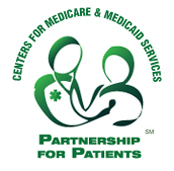
A recently released federal report showed that an estimated 50,000 fewer patients died in hospitals and approximately $12 billion in health care costs were saved as a result of a reduction in hospital-acquired conditions from 2010 to 2013. According to the Centers for Medicare and Medicaid Services (CMS), there have been 1.3 million adverse events and infections avoided in hospitals since 2010, translating to a 17 percent decline in hospital-acquired conditions over the three-year period.
This progress is attributed in part to provisions of the Affordable Care Act, such as Medicare payment incentives to improve the quality of care and the HHS Partnership for Patients initiative, a nationwide public-private collaboration that began in April 2011 with the goals of reducing preventable hospital-acquired conditions by 40 percent and 30-day readmissions by 20 percent. (Note the Partnership for Patients encourages family engagement, particularly to improve care transitions and reduce readmissions and has resources for families, including information on how to prevent hospital-acquired infections and other specific hospital-related adverse events.
Some highlights of their resources include:
Specific Hospital-Acquired Conditions:
- Adverse Drug Events
- Catheter-Associated Urinary Tract Infection (CAUTI)
- Central Line-Associated Blood Stream Infections (CLABSI)
- Injuries and Falls from Immobility
- Obstetrical Adverse Events
- Pressure Ulcers
- Surgical Site Infections
- Venous Thromboembolism (VTE)
- Ventilator Associated Pneumonia (VAP)
Healthcare-Associated Infections
Do the WAVE: Wash hands, Ask questions, Vaccinate, Ensure safety to help prevent healthcare-associated infections. WAVE resources (with more detailed instructions in brochure and wallet card) are listed below:
- WAVE brochure (PDF)
- WAVE wallet card (PDF)
- WAVE poster - vertical (PDF)
- WAVE poster - horizontal (PDF)
Hospital Leadership and Organizational Culture
The Partnership for Patients works through the Hospital Engagement Networks (HENs) to support systematic improvements in hospital leadership, culture, and patient and family engagement as cornerstones to improve patient safety.
Readmissions and Care Transitions
Care transitions refer to movement of patients from one health care provider or setting to another. Seamless care transitions require thoughtful collaboration among hospitals, community-based organizations, long-term and post-acute care providers, patient caregivers, and patients themselves.
